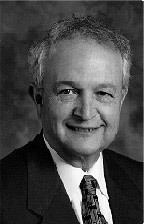 DOD E3 ACTIVITIES
DOD E3 ACTIVITIES DOD E3 ACTIVITIES
DOD E3 ACTIVITIES
The Department of Defense, Joint Spectrum Center (JSC), is currently conducting two ongoing E3 efforts. One is the Department of Defense/Industry Electromagnetic Environmental Effects Standards Committee (DIESC) whose objective is to compare military EMI standards with commercial EMI standards for the purpose of harmonization. Considering the mandate for military agencies to utilize as much commercial equipment as practical, the DIESC is developing a handbook, “Guide on the Use of Commercial EMC/EMI Standards by Military Agencies.” A draft of the handbook will soon be circulated within DoD agencies for review and approval. It will not be made available to industry, in general, until its formal release. However, representatives from industry participated in the preparation of this handbook. For instance, Dr. Ralph Showers from the University of Pennsylvania, was a representative for the American National Standards Committee C63. Other industry organizations that were represented in its preparation include the Society of Automotive Engineers, AE4 Committee on Electromagnetic Compatibility, Electronic Industry Association, G-46 Committee on Electromagnetic Compatibility, IEEE EMC Society, and NEMA. Other non-DoD participants included NASA and the NTIA.
The other ongoing activity involves the updating of MIL-STD-461D/462D, with the last meeting having been conducted in June 1998. Most of the changes have been clarifications, some changes in frequency ranges to harmonize with the European Union and RTCA DO-160 (FAA) requirements, and matters of this nature. No totally new requirements were added nor were any specific requirements deleted. However, the applicability of some requirements, such as CS115 and CS116, were broadened. Additionally, the use of a reverberation chamber as an alternate method for performing RS103 testing will be provided. The most significant revision was the combining of MIL-STD-461 and 462 into a single standalone interface document. This will ultimately result in the cancellation of MIL-STD-461D and 462D and the issuance of MIL-STD-461E.
One of the topics discussed at the recent revision meeting of MIL-STD-461/462 was the addition of ISO Guide 25 “General Requirements for the Compliance of Calibration and Testing Laboratories.” Notice 1 to MIL-STD-462 specifies ISO Guide 10012-1 “Quality Assurance Requirements for Measuring Equipment, Part 1" which addresses equipment calibration. However, there was some concern that test laboratories performing military testing should be on a par with commercial laboratories relative to capability and quality. In this regard, commercial laboratories are required to comply with ISO Guide 25 for FCC testing, European Commission requirements testing, and for certification by the NIST NVLAP Program and the A2LA EMC Test Laboratory Accreditation Program. It was noted, on the other hand, that MIL-STD-461 is an interface standard and that a laboratory quality standard should not be imposed in the document. This matter is still under consideration.
Other Government E3 activities included an E3 meeting conducted by the Army in Huntsville, Alabama which was planned for the week of August 10, 1998. This conference included three training seminars focusing on MIL-HDBK-237, the spectrum certification process, and the design of equipment to withstand HEMP environments. This conference follows the general DoD E3 Conference which was conducted in Orlando, Florida during the week of April 6 and the NAVAIR EMC Conference which was conducted in San Diego during the week of May 15, 1998.
It is important to note that the contents of this article represent the opinions and views of the author and not that of the Government. I write this column to help keep the membership informed of DoD EMC activities (as I see them) since many of our EMCS members are still involved in DoD EMC matters. Comments on this column as well as this article are welcome. In particular, I would like to learn of the specific interests in DoD E3 activities by our membership. Readers can contact me at rgoldblum@RBitem.com.